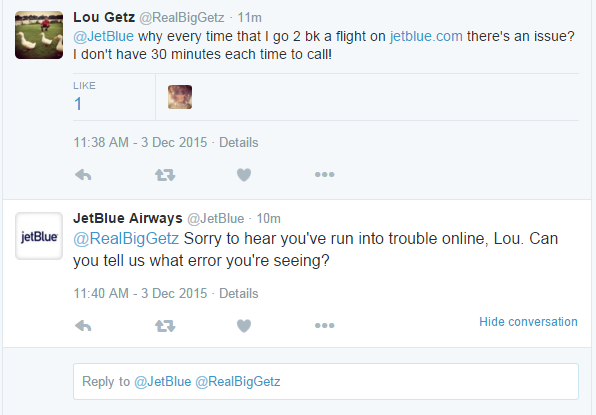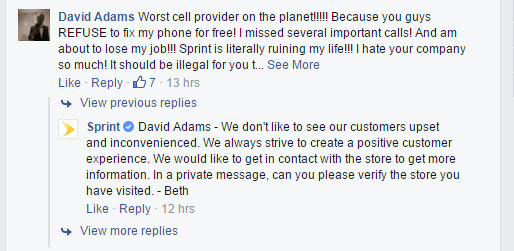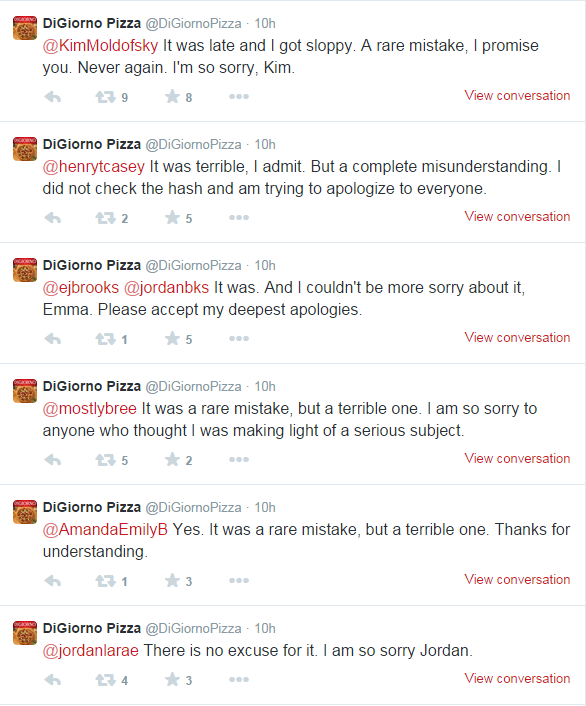Marketing
five Easy Tricks to Win With Your Social Media Responses
5 Simple Tips to Win With Your Social Media Responses
In the past, there was a great barrier in communication between a brand and its customers.
There was no direct feedback from the customer unless the latter exerted the effort to call the company. A company was limited to traditional media advertising—print, radio and TV—all of which one-way communication streams. The customer response to these advertising tactics could only be measured through sales, and if the company was willing to shell out money for market research.
Then, social media happened.

Social media is the unlikely advertising platform that flourished and became one, if not the most powerful marketing tool, beating even the traditional media in terms of reach and cost efficiency. It was not intended for marketing though.
Facebook, Twitter, LinkedIn and the now defunct Friendster (now an online gaming site) and MySpace (now a music streaming site) were places to connect with real life friends through the internet. Users created profiles and interacted with their long lost high school buddies or talked business with corporate associates.
A decade has passed and social media is virtually inseparable from our everyday lives. The personal and professional connections are still there but it destroyed the barriers of communication and shaped a different kind of relationship between the consumer and the brand.

This social media relationship between brands and their consumers can be complicated. It may seem that they are on a level-playing field but with the emergence of user reviews as well as sites like Yelp and Foursquare the consumer became empowered, sometimes even leading to bullying. The potential reach that social media marketing provides can backfire especially if a brand commits a social media faux pas. You may say bad publicity is still publicity but just one review that puts you in a bad light has the potential to go viral.
Therefore, a brand is limited to well-planned posts, thinking a few steps ahead about how the audience will receive them.
But what is the right way to respond to social media complaints? How do you interact with user comments? How do you respond to competitors who interact with your social media accounts? Here are some pointers to win with your social media responses.
-
Have a well-thought-out social media complaints plan and stick to it. Some small businesses do not make social media presence a priority. Some think that just creating a Facebook or Twitter page for the business is enough. The current state of social media says otherwise. Social networking sites are now the first place your consumers go to ask questions or post their complaints. Having a social media strategy specifically on addressing customer complaints can help when a crisis arises.

Comcast is a great example of a having such a customer complaint plan. Being an internet service provider means a ton of customer complaints every time there are service interruptions, slowdowns, and bandwidth billing problems. The company created a dedicated support account to provide direct technical support and personally answer customer questions.You don’t need to create a dedicated support account, of course. You just need to create a crisis plan that suits your company persona. -
Address the complaint quickly and in a friendly but professional manner. As I’ve mentioned, the fast-paced social media environment gives that one review that puts you in a bad light, the potential to go viral. Responding to customer complaints as they happen would give your consumers the impression that you value the quality of service you provide and that you have an active engagement with them through your social media account.

JetBlue Airways might just have the quickest social media responses on the internet. Stressed customers are normal in the airline business, especially with flight delays and cancellations. There’s also that nervous feeling of levitating a thousand feet above the ground that puts them literally and figuratively at the edge of their seats. JetBlue’s social media accounts ease this stress by providing quick and patient response to their customers. If you check their Twitter account for example, you will see replies as early as five to ten minutes after the customer posted. Now that is customer service. -
Take the discussion away from the public and talk to the complainer personally. The social media environment might be set in a public setting but that doesn’t mean you should address every complaint publicly. Aside from making your business profile cluttered, addressing them in public makes them open to other commenters who abuse and troll the comment section.

As a mobile service provider, Sprint has a fair share of customer complaints. Its troubleshooting solutions are technical in nature such as network problems or confidential such as billing problems. Thus, it is both in the interest of the consumer and the company that complaints are addressed personally, especially for the latter. Why? Taking complaints this way gives the control back to the company. Set the tone of the conversation. Get relevant details and provide an action plan to set the solution. Don’t forget to go back to the public post as well and state that the issue is being resolved. -
Use humor only in small dosages. Humor can be a powerful thing. The one-way communication of traditional brand marketing often utilizes humor for effect. It establishes rapport and memorability with the audience. When social media anthropomorphize brands into their own personalities, boring brands became more interesting with their use of comedy. But how should you use humor to address snarky comments and complaints?

The best use of humor is the response of car company, SmartCar, to a snide commenter about the ability of a bird’s excrement to total a SmartCar. Their response? A nifty infographic detailing how much excrement from different species of birds is needed to damage their safety cell.Humor can also backfire like DiGiorno’s infamous #WhyIStayed Responding to a trending hashtag, DiGiorno’s twitter account quickly rode in on a hashtag stating that pizza is a good reason to stay. It was a funny tweet unless you know the context of the hashtag—women taking to Twitter to discuss physical and emotional abuse in their relationships.
-
Acknowledge your mistakes and apologize. Mistakes can happen. You are not a perfect brand, nor is anyone else. Yes, you need to protect your brand image, but that doesn’t mean you shouldn’t acknowledge the things that people are complaining about. Building a brand relationship is a working process and negative feedback can often lead to improvements in our businesses.

After the mistake of DiGiorno pictured above, they took the more difficult but better approach in addressing the issue. The brand responded to hundreds of Twitter users offended by their tweet and crafted a personalized and sincere reply acknowledging their mistake.
Social media is a just a tool but it is a very powerful one. How a company uses it defines the brand as a whole. The occasional negative feedback and customer complaints online are necessary to build and nurture a relationship with your consumers. By using the two-way communication brought by the internet and knowing how to respond to customer feedback, social media can turn into an opportunity to win not only your affected customers but also others who see your exceptional online customer service.
Do you have tips on how to win at your social media responses? Comment below! Also, try custom printing for promoting your social media pages.







